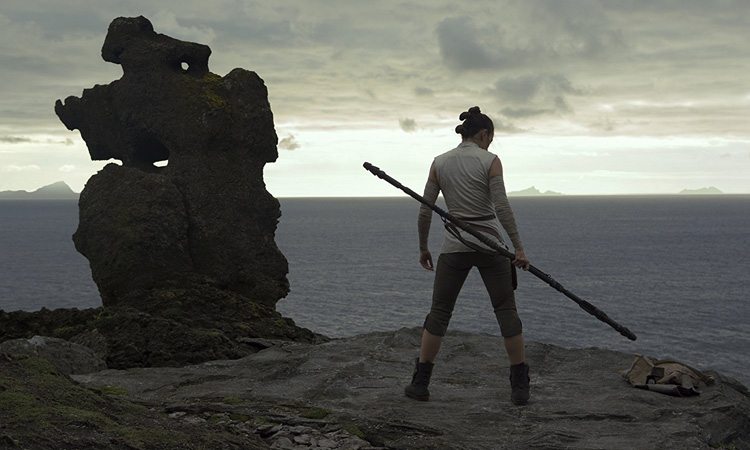My father has a story about the release of the original “Star Wars” in 1977. Purportedly, after watching the groundbreaking film for the first time, he and his friends immediately lined up to see it again—or perhaps two more times. Upon hearing this story, I remember wishing that I could’ve experienced “Star Wars” when there was nothing else like it. That’s what watching the opening scene of Star Wars: The Last Jedi feels like.
Rian Johnson takes the directorial reign for the eighth chapter of the Star Wars saga, and boy, does he know how to direct a movie. Johnson’s background lies in daring indie sci-fi, but he clarifies his blockbuster credentials during the opening battle of The Last Jedi. After its famous text crawl, the film wastes no time catching up with the fight between the First Order and the Resistance—and reaffirming the franchise’s propensity for technical marvel.
Space skirmishes, John Williams’ score, point of view shots from rebel ships: it’s all back, it’s still exciting, and Johnson’s hand guides the war like we’ve never seen it before. The Last Jedi holds the franchise’s record for most moving pieces: there are innumerable vehicles and characters to keep track of, but Johnson’s visual panache is one of precision. His visual cohesion binds every laser and lightsaber together like the Force. From the first battle to the last, the movie crafts sequences that steal your breath away. Star Wars fans won’t be able to stay still in their seats.
Johnson teams up with cinematographer and longtime collaborator Steve Yedlin to compose shots that inspire shock and awe. “The Last Jedi” is easily the best-looking Star Wars: its most memorable moments are like silent portraits of fireworks displays.
The franchise’s action and Rian Johnson’s directing ability were never in doubt, but how’s the screenplay? The Star Wars movies aren’t exactly known for nuanced writing. Johnson serves double duty as screenwriter here, and he captures the Star Wars spirit immaculately—for better and for worse.
“The Force Awakens” echoed the plot structure of the original trilogy; “The Last Jedi” echoes its feel. Between a deftly handled ensemble cast, inventive worldbuilding, and a smorgasbord of hilariously off-kilter gags, the film fits snugly into the Star Wars universe. It even exceeds “The Force Awakens” in this regard due to more complete character arcs.
There are multiple missteps that hearken back to the prequel trilogy, though. Rian Johnson is typically a serious filmmaker: when he aims too high for heart, he trips into a vat of cheese. The dialogue is riddled with clunkers—some characters are saddled with oversentimental lines and end up unconvincing.
Newcomers Laura Dern and Kelly Marie Tran are the biggest victims of anemic writing, though the former overcomes it with a multifaceted performance. There are hardly any weak links in the massive cast, but the strongest are Mark Hamill (who apparently learned how to act after 1983’s “Return of the Jedi”) and Adam Driver, both of whom wrestle with inner conflict to a tangible degree.
The thematic conflict that leads to their turmoil is what sets “The Last Jedi” apart from the rest of the franchise. The film tears asunder the false dichotomy between good and evil, refusing the moral binary that defined the saga in favor of something more complex. In short, it reframes the entire Star Wars universe. The warm, nostalgic scene that illustrates this shift could be the single greatest in Star Wars history.
Not every scene can stand that tall, especially when “The Last Jedi” is overcrowded with them. Johnson intertwines the 150-minute runtime with so many chains of events that one feels choked by the fifteenth set piece. Too much of a good thing can be wearying, especially when the film’s structure is congested with numerous beginnings, middles, and ends. Irksome or inconsistent narrative choices (like characters stumbling onto solutions) become the only ways out of the clutter.
With a scope that large, though, there’s also a lot to love. The Last Jedi coalesces into a great piece of entertainment. It’s chock full of triumphant moments, surprising plot turns, and colorful worlds; constantly reminding us why Star Wars is an integral part of blockbuster history. It may not be the best Star Wars movie, but it’s unquestionably the most consequential.
★★★★ (4 out of 5)




